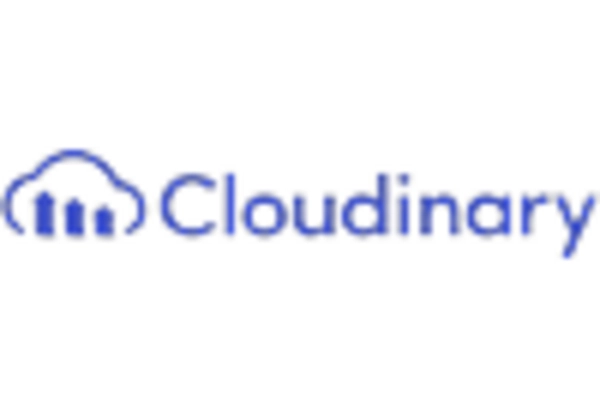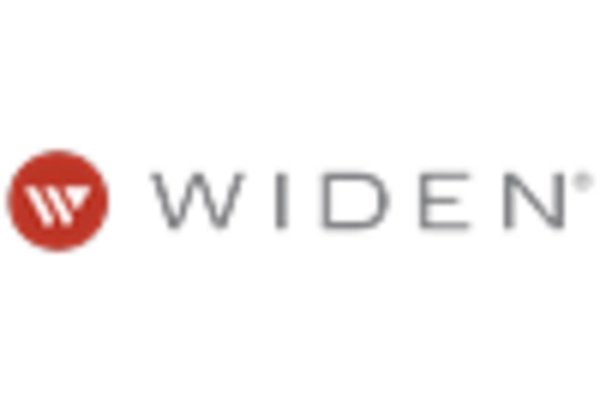Growth of E-commerce Platforms
The digital asset management software market in South America is significantly influenced by the rapid growth of e-commerce platforms. As online shopping continues to gain traction, businesses are increasingly investing in digital asset management solutions to handle the vast array of product images, videos, and marketing materials required for effective online sales. In 2025, e-commerce sales in South America are projected to exceed $100 billion, highlighting the critical need for efficient asset management systems. These systems enable e-commerce businesses to maintain a consistent brand image, manage product information, and ensure that digital assets are readily available for marketing campaigns. The integration of digital asset-management software allows companies to streamline their operations, reduce time-to-market, and enhance customer experiences, thereby driving further growth in the digital asset-management-software market.
Emergence of Remote Work Culture
The digital asset management software market in South America is being shaped by the emergence of a remote work culture. As organizations adapt to flexible work arrangements, the need for efficient digital asset management becomes increasingly important. Remote teams require seamless access to digital assets to collaborate effectively, share resources, and maintain productivity. In 2025, it is anticipated that remote work will account for over 30% of the workforce in South America, further emphasizing the necessity for robust digital asset-management solutions. These tools facilitate the organization, storage, and retrieval of digital assets, enabling teams to work cohesively regardless of their physical location. Consequently, the shift towards remote work is likely to propel the adoption of digital asset-management software, as businesses seek to enhance collaboration and streamline their operations.
Rising Demand for Digital Content
The digital asset management software market in South America is experiencing a notable surge in demand for digital content across various sectors. As businesses increasingly rely on digital media for marketing and communication, the need for efficient management of these assets becomes paramount. In 2025, it is estimated that the digital content creation industry in South America will reach a valuation of approximately $5 billion, indicating a robust growth trajectory. This rising demand necessitates sophisticated digital asset management solutions to streamline workflows, enhance collaboration, and ensure that digital assets are easily accessible and organized. Companies are recognizing that effective management of digital content not only improves operational efficiency but also enhances brand visibility and customer engagement. Consequently, this trend is driving the adoption of digital asset-management software, as organizations seek to optimize their digital asset utilization.
Increased Focus on Brand Consistency
In the competitive landscape of South America, maintaining brand consistency has become a crucial factor for businesses. The digital asset-management-software market is responding to this need by providing tools that help organizations manage their digital assets effectively. Companies are increasingly aware that inconsistent branding can lead to customer confusion and diminished trust. As a result, they are turning to digital asset-management solutions to ensure that all marketing materials, logos, and other brand assets are uniform across various channels. This focus on brand consistency is expected to drive a growth rate of approximately 15% in the digital asset management software market in South America over the next few years. By leveraging these solutions, businesses can enhance their brand identity, improve customer loyalty, and ultimately drive sales.
Regulatory Compliance and Data Management
The digital asset management software market in South America is increasingly influenced by the need for regulatory compliance and effective data management. As data protection regulations become more stringent, businesses are compelled to adopt solutions that ensure compliance while managing their digital assets. In 2025, it is projected that compliance-related expenditures will reach $2 billion in South America, underscoring the importance of integrating compliance features into digital asset-management software. Organizations are recognizing that effective data management not only mitigates risks associated with non-compliance but also enhances operational efficiency. By leveraging digital asset-management solutions that prioritize compliance, businesses can safeguard sensitive information, streamline workflows, and maintain a competitive edge in the market.
















Leave a Comment